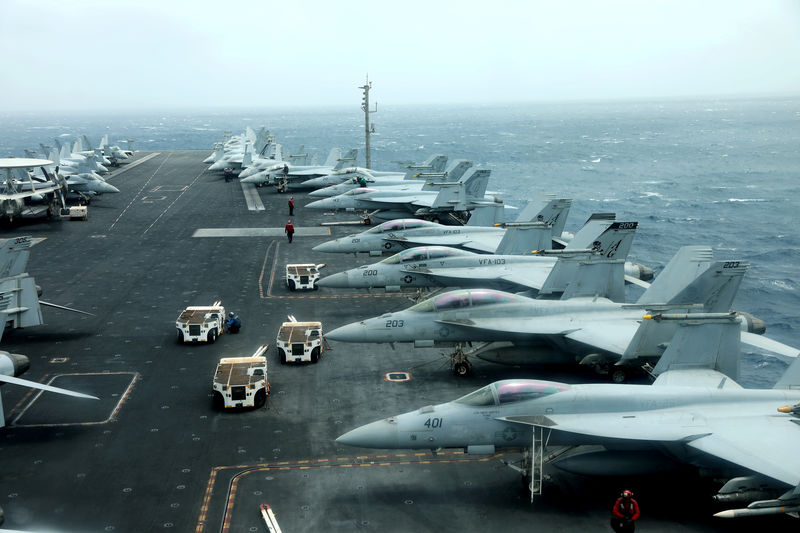By Idrees Ali
WASHINGTON (Reuters) - The U.S. aircraft carrier strike group Abraham Lincoln sailed through the vital Strait of Hormuz on Tuesday, U.S. officials told Reuters, amid simmering tensions between Iran and the United States.
Tensions in the Gulf have risen since attacks on oil tankers this summer, including off the coast of the United Arab Emirates, and a major assault on energy facilities in Saudi Arabia. Washington has blamed Iran, which has denied being behind the attacks on global energy infrastructure.
The commander overseeing U.S. naval forces in the Middle East told Reuters in May that he would send an aircraft carrier through the Strait of Hormuz if needed.
In a statement on Tuesday, the Navy said the Lincoln transited through the Strait into the Gulf.
About a fifth of the world's oil passes through the Strait of Hormuz.
The United States has deployed thousands of additional military forces in the Middle East, including bombers and air defense personnel, to act as a deterrent against what Washington says is provocative Iranian behavior.
The latest move comes as protests, sparked by gasoline price hikes, have spread across Iran since Friday, with demonstrators demanding that clerical leaders step down.
WAITING TO BUY FIGHTER JETS
Also on Tuesday, the U.S. military released a report that said Iran is likely to buy fighter jets and battle tanks from Russia and China when a United Nations-imposed arms embargo on Tehran -- under the 2015 nuclear deal with major powers -- is lifted next year.
While the U.N. arms embargo on Iran is supposed to be lifted in October 2020, five years after the nuclear deal took effect, it is questionable whether that will transpire given the recent unraveling of the accord.
The report said that Iran was already in discussions with Russia, and China to a lesser extent, to buy military hardware.
Earlier this month, President Hassan Rouhani said Iran would regain access to the international arms market later next year if it stuck to the 2015 nuclear deal and this would prove "a huge political success."
The nearly 120-page report by the Pentagon's Defense Intelligence Agency detailed Iranian military strategy and capabilities.

According to the report, Iran will deploy increasing numbers of more accurate and lethal ballistic missiles in the future and field new land-attack cruise missiles. And over the next decade, Iran's military could consider taking part in multilateral peace-keeping missions and building permanent bases in allied countries, the report said.